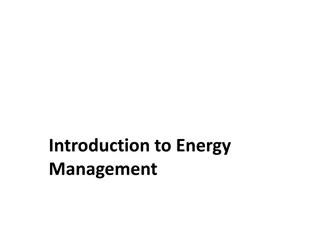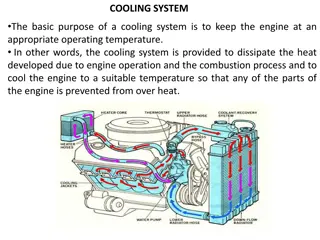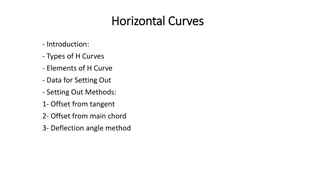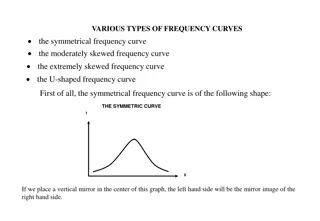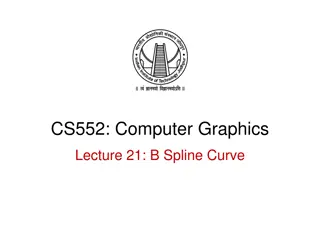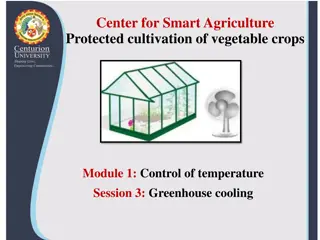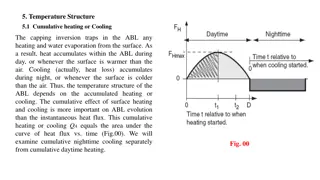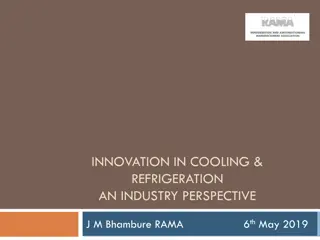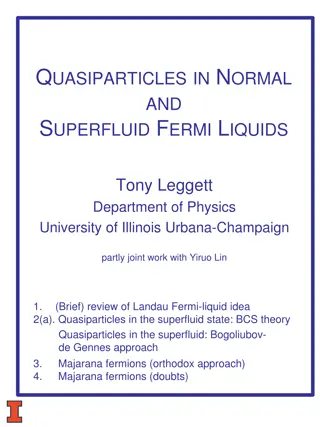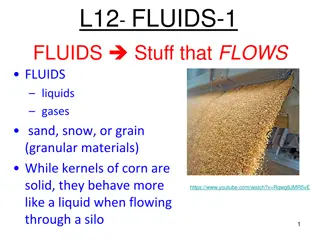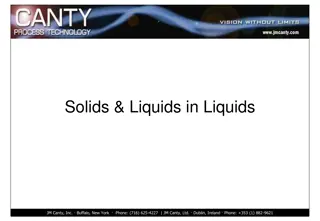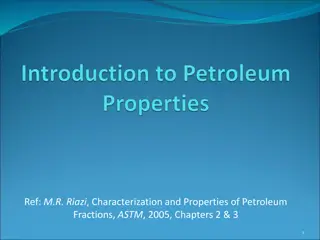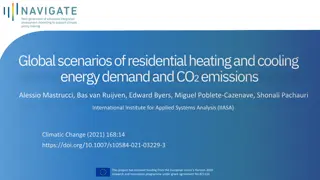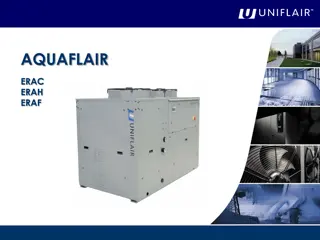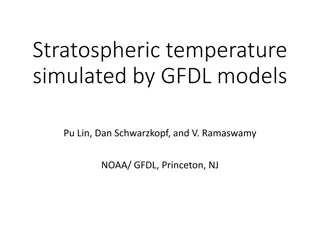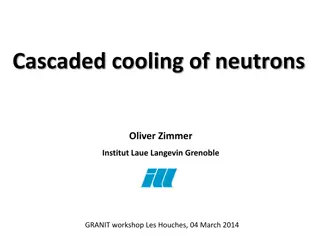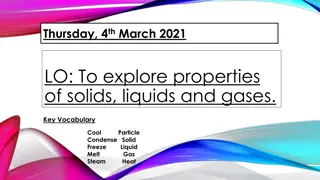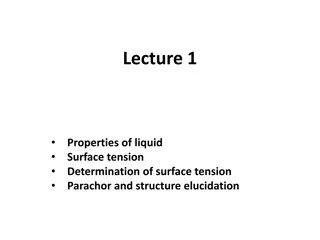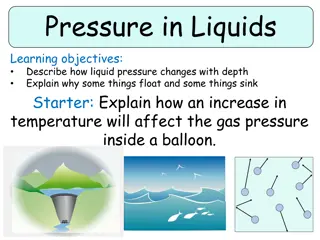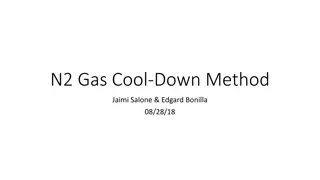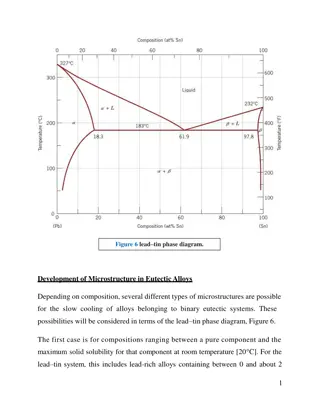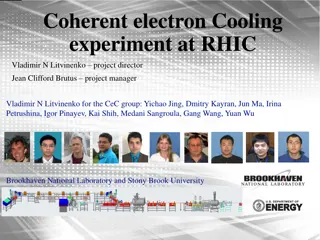Comparing Cooling Curves of Different Liquids at 70°C
The activity involves heating different liquids to the same temperature (70°C) and comparing their individual cooling curves to understand their specific heat capacities. Students create hypotheses about the heat release during cooling, test them using temperature sensors, and explore how molecular composition influences temperature changes. The experiment aims to relate heat susceptibility to properties like boiling and melting points, emphasizing the importance of specific heat in understanding temperature variations in matter.
Uploaded on Oct 10, 2024 | 0 Views
Download Presentation

Please find below an Image/Link to download the presentation.
The content on the website is provided AS IS for your information and personal use only. It may not be sold, licensed, or shared on other websites without obtaining consent from the author. Download presentation by click this link. If you encounter any issues during the download, it is possible that the publisher has removed the file from their server.
E N D
Presentation Transcript
Specific heat Heating different liquids to the same temperature (70 C) and comparing their individual cooling curves.
Specific heat Heating different liquids to the same temperature (70 C) and comparing their individualcooling curves. Objective The purpose of this activity is to create a hypothesis about the relative amount of heat released during the cooling process by three liquid samples of different compositions. Students will proceed to test their hypothesis using temperature sensor. the Labdisc external
Specific heat Heating different liquids to the same temperature (70 C) and comparing their individualcooling curves. Introduction and theory The temperature of matter changes as a result of heat transfer from or to the environment. Some materials appear to be highly susceptible to increases in temperature, while others do not. For example, cooking oil warms up much faster than water in a pan. Starting from this simple observation, we can conclude that the nature of matter, mainly molecular composition, is crucial in predicting how much time something will take to change in temperature, by absorbing or releasing heat. Why do you think that oil is a good substance for cooking? Try to explain.
Specific heat Heating different liquids to the same temperature (70 C) and comparing their individualcooling curves. Introduction and theory How can the susceptibility to increase temperature be related to other physical properties, such as boiling or melting point? Carry out the experiment activity with your class so that at the end you ll be able to answer the following question: What factorsare importantin understandingtemperaturevariation in matter?
Specific heat Heating different liquids to the same temperature (70 C) and comparing their individualcooling curves. Introduction and theory Theoretical The physical changes caused by heat differences between a substance and its environment can be explained by quantitative or qualitative methods, which are closely related. Specific heat is a physical property of matter, which represents the heat required to change the temperature of 1 Kg of substance at 1 K. The following table shows some examples: Compound c [KJ / Kg K] Vegetable oil 1.67 Acetic acid 2.04 Water 4.19
Specific heat Heating different liquids to the same temperature (70 C) and comparing their individualcooling curves. Introduction and theory As we ve noted, the general specific heat formula is: Where c is specific heat, m is the mass of the substance and T is the thermal difference. The temperature of matter is a direct measure of the motion of the molecules, so that the greater the motion the higher the temperature. However, the intermolecular bonds or intermolecular forces are opposed to the free movement of molecules. In this case substances made of weak molecular forces easily increase temperature, because the energy acts directly on the molecules. In another case, substances made of strong molecular forces need a great amount of energy to break their bonds first. These last kind of compounds therefore save a lot of energy, releasing a greater amount of caloric energy during the cooling process.
Specific heat Heating different liquids to the same temperature (70 C) and comparing their individualcooling curves. Introduction and theory Now students are encouraged to raise a hypothesis which must be tested with an experiment. If you warm up 25 ml of fresh water, vegetable oil and acetic acid, which of the substances will exchange the most amount of heat with the environment? Will the results be correlated with the specific heat values?
Specific heat Heating different liquids to the same temperature (70 C) and comparing their individualcooling curves. Activity description Students will build a domestic calorimeter to measure the decreasing temperature under isolated conditions. Vegetable oil, acetic acid (vinegar) and fresh water will be heated to 70 C and measured with the Labdisc external temperature probe. The experiment data will be interpreted as a result of molecular properties of the matter, in particular specific heat.
Specific heat Heating different liquids to the same temperature (70 C) and comparing their individualcooling curves. Resources and materials Labdisc Gensci External temperature probe Polystyrene cup with plastic tap Flask (25 ml) with a perforated rubber stopper Bunsen burner Laboratory heat assemblage Beaker (250 ml) Acetic acid (vinegar) Vegetable oil Fresh water
Specific heat Heating different liquids to the same temperature (70 C) and comparing their individualcooling curves. Using the Labdisc Labdisc configuration To collect measurements with the Labdisc and thermocouple sensor, the Labdisc must be configured according to the following steps: Open the GlobiLab software and turn on the Labdisc. 1 Click on the Bluetooth icon in the bottom right corner of the GlobiLab screen. Select the Labdisc you are using currently. Once the Labdisc has been recognized by the software, the icon will change from a grey to blue color . If you prefer a USB connection follow the previous instruction and then click on the USB icon. You will see the same color change when the Labdisc is recognized 2 .
Specific heat Heating different liquids to the same temperature (70 C) and comparing their individualcooling curves. Using the Labdisc 3 Click on Logger Setup window. Enter 1/s for rate and 1000 for samples. to configure the Labdisc. Select external temperature in the
Specific heat Heating different liquids to the same temperature (70 C) and comparing their individualcooling curves. Using the Labdisc 4 Once you have finished the sensor configuration start measuring by clicking . Once you have finished measuring stop the Labdisc by clicking . 5
Specific heat Heating different liquids to the same temperature (70 C) and comparing their individualcooling curves. Experiment Build a domestic calorimeter perforating a plastic cap in the center. The temperature probe must insert tightly through the hole, keeping the highest possible degree of environmental isolation. The calorimeter is made of an external polystyrene cup containing the flask with the rubber stopper and the plastic perforated cap. Pour 25 ml. of a liquid into the flask and heat it by submerging in a volume of water up to 70 C using the clasps. Handle the Bunsen burner carefully. Once the temperature has been reached, place the flask into the polystyrene cup and close it with the rubber stopper. After that, cover the cup using the plastic cap and insert the temperature probe through the hole.
Specific heat Heating different liquids to the same temperature (70 C) and comparing their individualcooling curves. Experiment Wait six to ten minutes and stop Labdisc. The recording must allow the same temperature difference of (5 C) to be seen in the three different liquids tested.
Specific heat Heating different liquids to the same temperature (70 C) and comparing their individualcooling curves. Results and analysis Pick up the higher and lower values of the curve using the tool. Support your selections with the statistics tool ( ). Get the slopes of each curve using the linear regression tool ( ). Record the slope values and the time difference between the selected points over the curve.
Specific heat Heating different liquids to the same temperature (70 C) and comparing their individualcooling curves. Results and analysis How do the results relate to your initial hypothesis? Explain. What differences do you find between the cooling curves of each liquid? Which of the substances show the higher and lower time range between the selected points? Are these results correlated to the obtained slopes? If so, are these relationsexpected?
Specific heat Heating different liquids to the same temperature (70 C) and comparing their individualcooling curves. Results and analysis The graph below should be similar to the one the students came up with:
Specific heat Specific heat Heating different liquids to the same temperature (70 C) and comparing the cooling curves of these liquids. and comparing their individualcooling curves. Heating different liquids to the same temperature (70 C) Results and analysis Results and analysis The graph below should be similar to the one the students came up with: The graph below should be similar to the one the students came up with:
Specific heat Specific heat Heating different liquids to the same temperature (70 C) and comparing the cooling curves of these liquids. and comparing their individualcooling curves. Heating different liquids to the same temperature (70 C) Results and analysis Results and analysis The graph below should be similar to the one the students came up with: The graph below should be similar to the one the students came up with:
Specific heat Heating different liquids to the same temperature (70 C) and comparing their individualcooling curves. Conclusion How much heat was released within a 5 C range? Calculate Q. Students should point out that Q can be calculated from the specific heat general equation showed in the theoretical background section, however, they will need the density values of each liquid. The following table gives the information: Compound [Kg / ml] Vegetable oil 0.00092 Acetic acid 0.00105 Water 0.00099 Thus, Q = c m T Multiplying the factors, the amount of heat realeased by each substance from 338 K to 333 K was: Water Acetic acid Vegetable oil : 0.1929 KJ : 0.5227 KJ : 0.2677 KJ
Specific heat Heating different liquids to the same temperature (70 C) and comparing their individualcooling curves. Conclusion What is the physical meaning of the curve slopes? Is there any relation between the slopes and specific heat values? Students could deduce from the theoretical background that the molecular nature of each liquid determines its behavior during the cooling process. Steeper slopes indicate that the liquid releases heat more easily i.e. it is a substance made from weaker bonds. These kind of substances have a low thermal inertia per mass unit (a low heat change produces a 1 K temperature variation ). They then show lower magnitudes of specific heat. How would you explain the relation between released heat values and specific heat in each substance? Students should answer considering the background explored in the previous questions. As an explanatory example, the polar molecules of water form electric bonds between them, which are very strong. As the temperature increases a great amount of heat energy is required. On the other hand, water releases a great amount of heat when the temperature decreases. This argument supports the high value of specific heat. The same answer can be applied to other tested substances.
Specific heat Heating different liquids to the same temperature (70 C) and comparing their individualcooling curves. Activities for further application Ethanol has a specific heat value of 2.3 [KJ/Kg K]. How much heat would it have released? Students should indicate that ethanol would release an intermediate magnitude of heat between water and acetic acid, close to the last. You are looking for a rapid heat exchange metal to build an economic electric heater. What kind of metal could be easily discarded related to the specific heat capacities? Students should analyze the question and conclude that the substance with greater specific heat capacity will be more resistant to changes in temperature caused by thermal energy exchange with the environment, and therefore will not be a good heat conductor.


